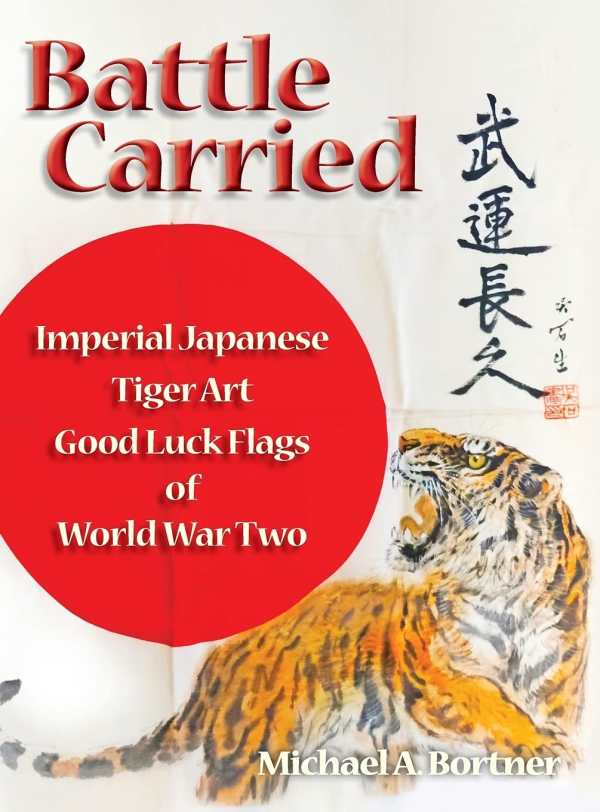Battle Carried
Imperial Japanese Tiger Art Good Luck Flags of World War Two
- 2021 INDIES Winner
- Honorable Mention, Reference (Adult Nonfiction)
Battle Carried is a coffee table book that’s flush with beautiful images; it tells the stories behind Japanese WWII tiger flags.
Michael A. Bortner’s fascinating history text Battle Carried covers the Japanese tiger art flags that soldiers carried in WWII, and that are now some of the most popular collector’s items for those interested in Japan’s engagement in the war.
The flags—embellished with wishes for good luck and names—often come in white fabric, but are called most notable for the tigers themselves—which are portrayed in various positions, including at hunt and in profile. Japan’s deep historical connection to tigers is covered, too. It’s a long tradition, dating to the seventh century or earlier.
Bortner also draws connections between Chinese and Japanese art, looking at the rise of papermaking and decorative pottery in those cultures. This work places the battle flags in their larger artistic context, pausing to reflect on legends, culture, and events well. Interesting anecdotes also contribute to this comprehensive look at the battle flags.
Particular portrayals of the tigers are used to organize the work, with chapters devoted to tigers attacking and tigers descending, shown in a variety of colorful images of the flags—many of which take up full pages of the book. Many of these flags include brilliant red spheres that are reminiscent of the Japanese flag itself. Frequent pauses are taken to highlight specific parts of the flags, with Bortner zooming in to focus on elements of their styles, or to comment on the techniques that the artists used. There is a particular haunting beauty to these captured tiger images, particularly when they’re considered against the weight of history.
Scholarship grounds the text, as do nuanced considerations of the markers of each item and their artists. A silk flag “damaged and darkened from a long period of storage” is attributed to artist Yano Kyoson, for example, whose style is discussed alongside some biographical information. While not all of the flags are treated with such detail, there’s an extraordinary breadth of insight throughout. The battle flags wind up telling a fascinating story about Japanese art and people, while personal images of those who carried the flags, and the stories of those who made them, make this work all the more compelling.
Flush with beautiful images, the coffee table art history book Battle Carried presents the stories behind Japanese WWII tiger flags.
Reviewed by
Jeremiah Rood
Disclosure: This article is not an endorsement, but a review. The publisher of this book provided free copies of the book and paid a small fee to have their book reviewed by a professional reviewer. Foreword Reviews and Clarion Reviews make no guarantee that the publisher will receive a positive review. Foreword Magazine, Inc. is disclosing this in accordance with the Federal Trade Commission’s 16 CFR, Part 255.

